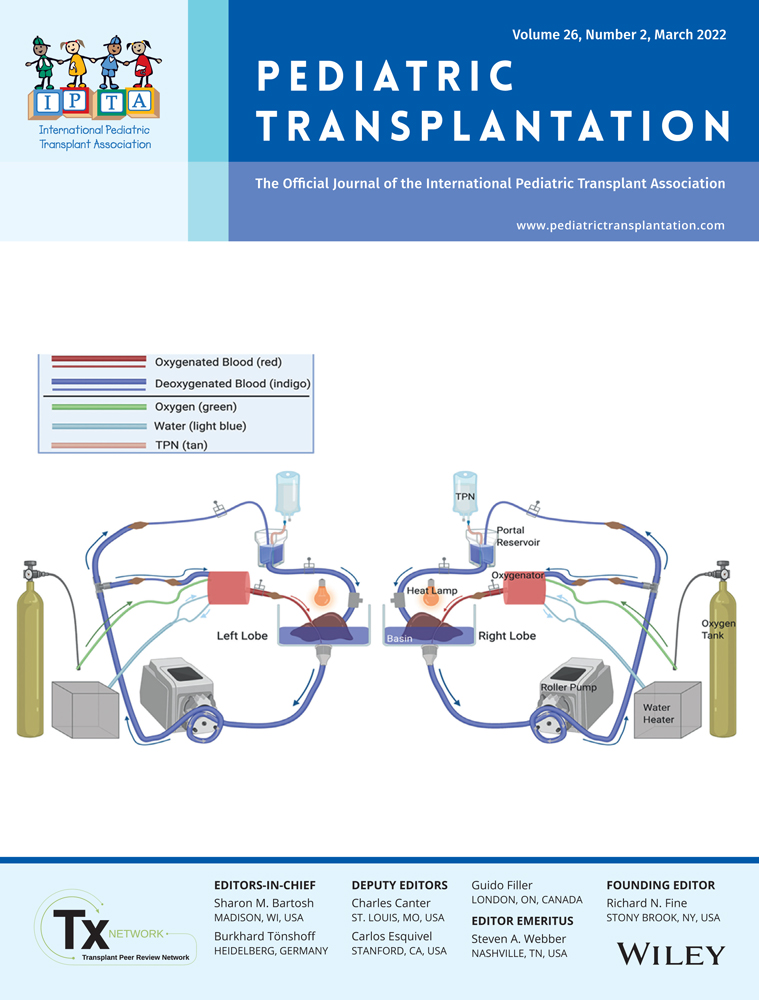Surgical technique and the long-term outcomes of pediatric living donor domino liver transplantation from patients with maple syrup urine disease
Funding information
This work was supported by grants from the Scientific Research Fund of the Ministry of Education and a Research Grant for Immunology, Allergy and Organ Transplant, Rare and Intractable Disease from the Ministry of Health, Labor, and Welfare, Japan (grant number 201420032A, H27-1, H28-3, H30-1)
Abstract
Background
The native liver of patients with maple syrup urine disease (MSUD) (1st recipients) can be used as a graft for non-MSUD patients with end-stage liver disease (2nd recipients). This study aimed to demonstrate the optimal operational procedures and the long-term outcomes of 2nd recipients.
Methods
Six 2nd recipients of living donor domino liver transplantation (LD-DLT) (age: 42.5 [22–169] months at DLT) received a native liver as a graft from an MSUD patient at our hospital between June 2014 and April 2020. We reviewed the operational procedures and outcomes of 2nd recipients after LD-DLT.
Results
The 2nd recipients' original diseases included biliary atresia, congenital hepatic fibrosis, congenital protein C deficiency, familial hypercholesterolemia, hepatoblastoma, and mitochondrial hepatopathy. Five of the six recipients had a whole liver and one had a right lobe graft. The site at which the vessels of the MSUD liver were dissected prioritized the safety of the 1st recipient. At the end of follow-up, all recipients were doing well without surgical complications. The mean serum amino acid values of the 2nd recipients did not exceed the upper limit of the reference values during the long-term observation period. All patients showed normal growth while maintaining the same z-score of height and weight after LD-DLT as the preoperative level.
Conclusion
The liver of patients with MSUD can be used safely without concern regarding long-term complications or de novo MSUD development. LD-DLT using the MSUD liver can expand the donor pool as an alternative graft in pediatric LT.
CONFLICTS OF INTEREST
The authors declare no conflicts of interest in association with the present study.
Open Research
DATA AVAILABILITY STATEMENT
The data that support the findings of this study are available from the corresponding author, [Sakamoto S.], upon reasonable request.




